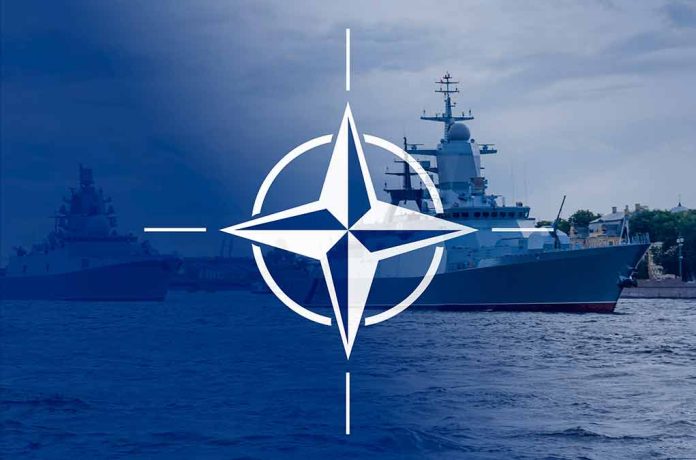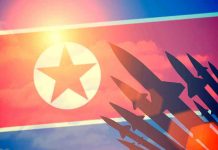
Russia produces as much ammunition in three months as NATO does in an entire year, signaling a dangerous imbalance that threatens European security as NATO Secretary General Mark Rutte sounds the alarm for urgent action.
Key Takeaways
- NATO urgently needs a 400% increase in air and missile defense systems to counter growing Russian military capabilities
- Russia is rapidly rebuilding its military using Chinese technology, producing weapons faster than NATO anticipated
- NATO allies must increase defense spending from the current 2% GDP target to potentially 5% to address the capability gap
- Russia’s military expenditure reached $145.9 billion last year (6.7% of GDP), a 41% increase from the previous year
- While Russia currently cannot successfully attack a NATO member, it might develop that capability within 3-5 years
NATO’s Alarming Ammunition Deficit
NATO Secretary General Mark Rutte delivered a stark warning about the alliance’s dangerous ammunition production shortfall compared to Russia during a recent address at Chatham House. The revelation that Russia produces in three months what NATO requires an entire year to manufacture highlights a critical vulnerability in Western defense capabilities. This production disparity comes as Russia continues to expand its military industrial complex with technological assistance from China, Iran, and North Korea, allowing Putin’s regime to sustain its war in Ukraine while simultaneously rebuilding its domestic arsenal at an alarming rate.
“Russia produces as much ammunition in three months as NATO does in a year,” stated General Mark Rutte, NATO Secretary.
Russia’s military spending reached a staggering 13.1 trillion rubles ($145.9 billion) last year, representing 6.7% of its GDP and marking a 41% increase from the previous year. When adjusted for purchasing power parity, experts estimate Russia’s effective military expenditure equates to $461.6 billion. This massive investment is yielding results, with Russia projected to produce 1,500 tanks, 3,000 armored vehicles, and 200 Iskander missiles by the end of 2025, far outpacing NATO’s production capabilities in numerous critical categories.
Urgent Call for Enhanced Air Defense
Rutte emphasized that NATO requires a dramatic increase in air and missile defense systems to effectively counter the growing Russian threat. The alliance needs five times its current air defense capacity—a 400% increase—to adequately protect European territory from potential Russian aggression. This warning comes as NATO analysts assess that while Russia currently lacks the capability to successfully attack a NATO member, it could develop such capacity within the next three to five years if the current production imbalance continues unchecked.
“We need five times as many systems to defend ourselves against missiles and air defense, equivalent to a markup of 400 percent,” stated Mark Rutte.
The situation is further complicated by significant production delays plaguing Western defense manufacturers. Rutte specifically highlighted Raytheon’s Patriot system, which despite proving effective against Russian missiles in Ukraine, now has a ten-year delivery timeline. Such extensive delays render NATO’s current procurement strategies inadequate for addressing immediate security threats. The alliance also faces shortfalls in maneuverable land formations and command and control sensors across Europe, including in the UK and Germany.
Pushing for Higher Defense Spending
The Secretary General is advocating for NATO members to increase their defense spending dramatically. While the current NATO guideline requires members to spend at least 2% of their GDP on defense, Rutte supports raising this target significantly, potentially up to 5%. His proposed spending plan would have allies commit 3.5% of GDP to core military capabilities with an additional 1.5% allocated to security-related investments. However, several NATO members, including the United Kingdom, have yet to commit to these ambitious new spending targets.
“Russia is reconstituting its forces with Chinese technology and producing more weapons faster than we thought,” stated Mark Rutte.
European defense spending reached $457 billion last year, representing a 12% increase from the previous year and a 50% increase from 2014 levels. While this growth is substantial, it remains insufficient to close the capability gap with Russia, especially considering the purchasing power advantages that Russia enjoys in domestic weapons production. The war in Ukraine has evolved into a war of attrition, with both sides consuming enormous quantities of ammunition daily, further straining NATO’s ability to maintain adequate stockpiles while simultaneously supporting Ukraine’s defense needs.
Preparing for the Future Threat Landscape
Rutte plans to signal the need for increased defense spending at the upcoming NATO Summit in The Hague, though he has avoided committing to a specific timeline for achieving the proposed spending targets. Beyond conventional weapons systems, the Secretary General emphasized the importance of investing in emerging technologies such as drones, long-range missile systems, space capabilities, and cyber defenses to maintain a credible collective defense posture against an increasingly aggressive Russia.
“NATO needs a drastic uplift in its air and missile defense capabilities if the alliance is to ward off Russian aggression,” stated Mark Rutte, alliance leader.
While acknowledging potential US plans to withdraw some forces from Europe as part of President Trump’s strategic realignment, Rutte expressed confidence that such moves would not create capability gaps in European defense. He believes NATO members can step up to fill any potential voids, though this would require immediate action on production capacity, defense spending, and strategic resource allocation. The clock is ticking as Russia continues to rebuild and expand its military capabilities at a pace that currently far outstrips NATO’s collective efforts.





